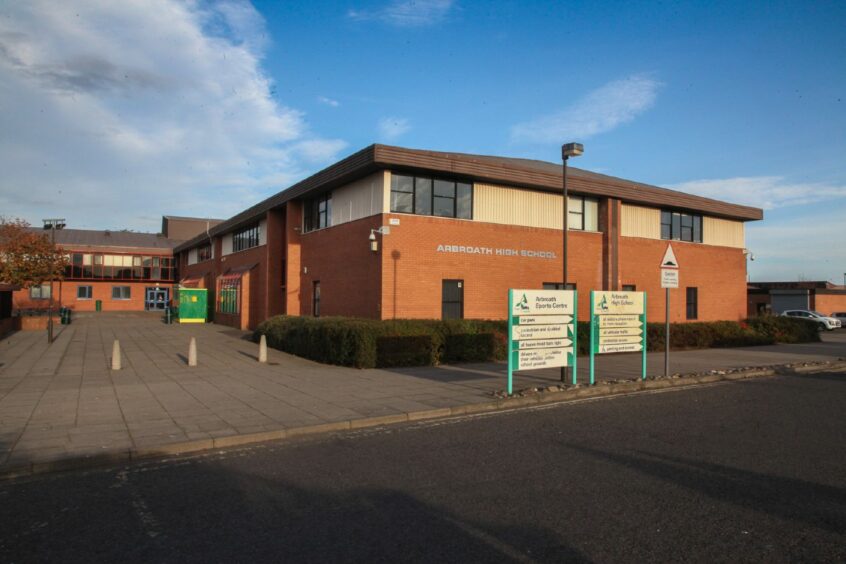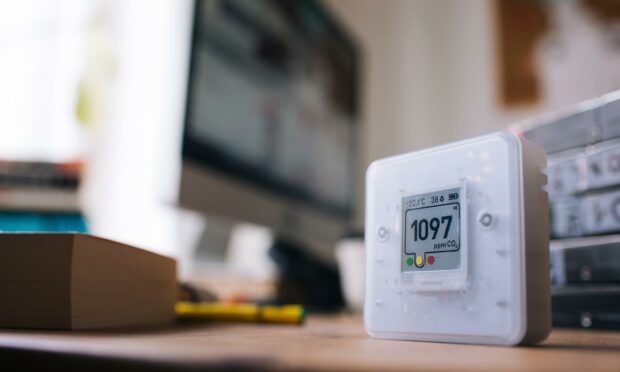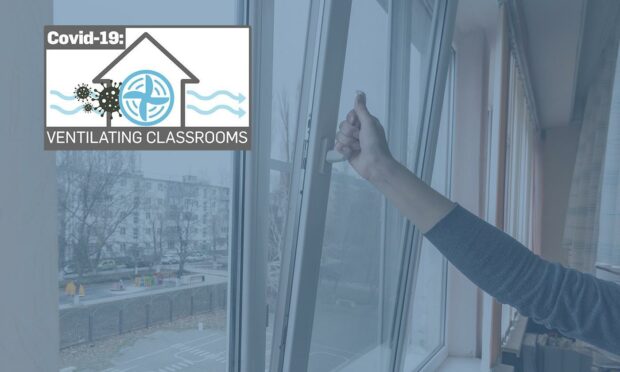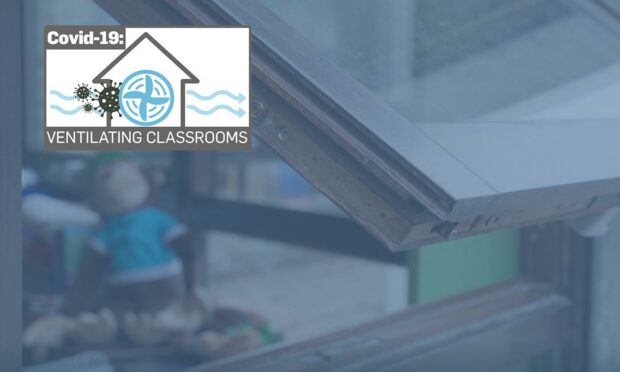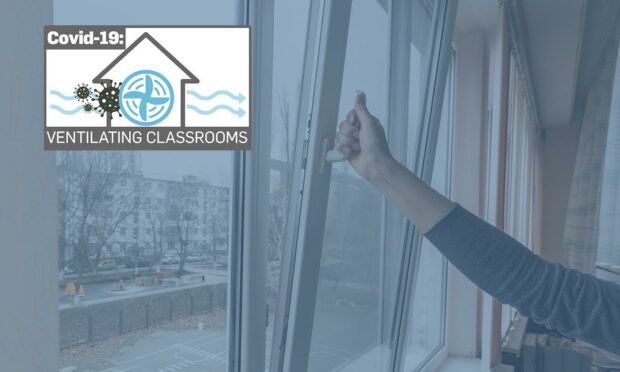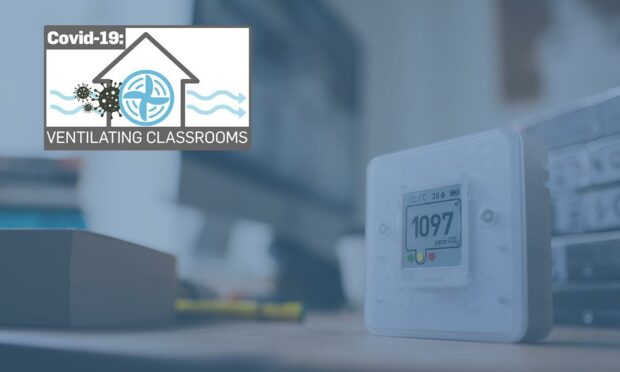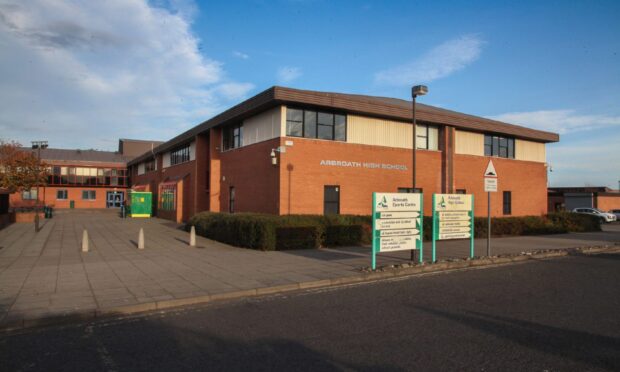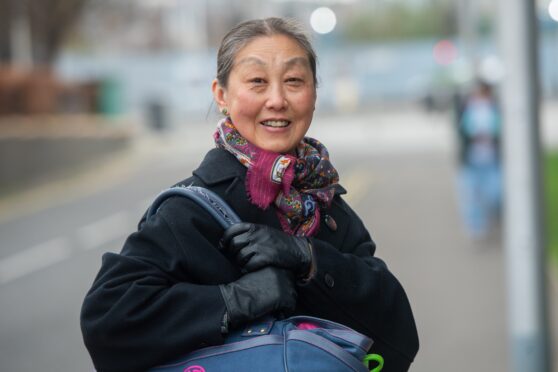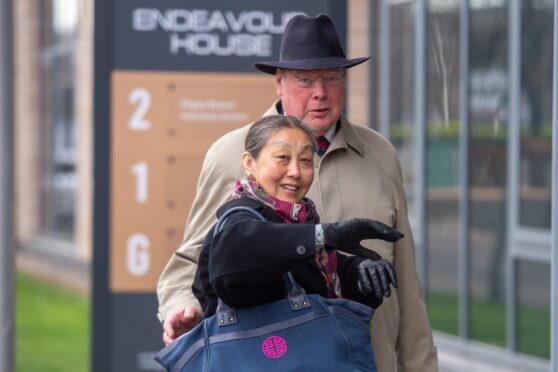Air quality is monitored in classrooms across Scotland to ensure adequate ventilation in schools and reduce the risk of Covid spread.
We have a list of the 11 Angus schools where inadequate circulation of fresh air was identified as a persistent problem in some classrooms, exceeding desired levels of carbon dioxide (800ppm).
Schools have been provided with monitors to record carbon dioxide (CO2) levels which indicate how well rooms and other occupied spaces are ventilated.
Where ventilation in schools is lacking – raising the risk of virus spread – action should be taken, such as opening windows more frequently or installing mechanical ventilation.
The number of Covid-related absences in schools soared in January and, although it has since reduced, virus case numbers remain high in the community.
Using Freedom of Information legislation, we asked the four councils in Tayside and Fife for details of classrooms where ventilation was a persistent concern according to Scottish Government guidance on reducing Covid risk in schools. Dundee City Council is yet to respond.
Ventilation in Angus schools
The local authority told us in which schools classrooms regularly triggered the first stage alarm on CO2 monitors – when levels reach 800ppm – but did not have details of individual readings.
Where CO2 levels are between 800ppm and 1500ppm government guidance recommends ventilation is increased or occupancy limited. Classrooms exceeding 1500ppm should be prioritised for improvement.
All ventilation issues had been resolved, the council said, and no further problems reported by the time it responded to our request on February 18.
Arbroath High School – Some classrooms were triggering first stage alarm during still weather. Windows and doors opened further, floor-standing fans deployed in each room and Ventomatic units fitted to windows in some rooms.
Birkhill Primary School – Some classrooms were triggering first stage alarm during still weather. Windows and doors opened further and floor-standing fans deployed in each room.
Borrowfield Primary School – Roof fans installed to provide extra fresh air in core areas of two blocks.
Liff Primary School – One teaching area where poor ventilation was identified during the 2020 lockdown was placed out of bounds until mechanical ventilation was installed, and reopened shortly after restrictions were eased. Some classrooms would trigger first stage alarm during still weather. Windows and doors opened further and floor-standing fans deployed in each room, now replaced by wall-mounted fans.
Monikie Primary School – Ventomatic units fitted to windows in some rooms.
Murroes Primary School – Ventomatic units fitted to windows in some rooms.
Monifieth High School – Some classrooms were triggering first stage alarm during still weather. Windows and doors opened further, floor-standing fans deployed in each room and Ventomatic units fitted to windows in some rooms.
Montrose Academy – Some classrooms were triggering first stage alarm during still weather. Windows and doors opened further, floor-standing fans deployed in each room and Ventomatic units fitted to windows in some rooms.
Northmuir Primary School – Roof fans installed to provide extra fresh air in core areas of two blocks.
Southesk Primary School – Some classrooms were triggering first stage alarm during still weather. Windows and doors opened further, floor-standing fans deployed in each room and Ventomatic units fitted to windows in some rooms.
Websters High School – Some classrooms triggering first stage alarm during still weather. Windows and doors opened further and floor-standing fans deployed in each room.
- Which schools in Fife and Perthshire recorded ventilation problems?
By the end of the first term of 2021/22, we were told Angus schools had an average of 25 CO2 monitors each – the highest proportion out of the four local authority areas in Tayside and Fife – and Angus Council intended to provide a monitor for each classroom.
A council spokeswoman said work to implement government ventilation guidance and ensure appropriate levels of fresh air in schools included providing guidance to schools on managing CO2 levels in teaching spaces.
She added: “As part of the ventilation strategy work has been undertaken to make sure windows are operational, increase/replace mechanical ventilation, install fans, install window vents and installing CO2 monitors to check on air quality.
“The council’s efforts have been supported by funding provided by the Scottish Government to allow of the purchase of CO2 monitors and to carry out remedial works which have been identified.
“This has been a significant piece of work for the council to undertake in a short period of time and it has assisted in the ongoing management of Covid within the council’s schools.”

